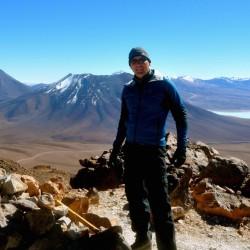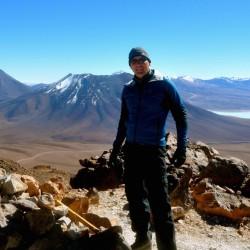To say it has been an interesting year on Mt. Everest would be an understatement. After taking 2020 off due to the coronavirus pandemic, Nepal reopened the mountain this spring to foreign climbers. As a result, the country has issued a record number of permits, making base camp as crowded as it has ever been.
But as the season has stretched on there have been disturbing reports of a concerted effort to cover up a COVID outbreak that is so bad that one mountaineer described Everest base camp as "a shit show." Throw in controversial and baffling new rules governing when teams can set out for the summit, not to mention potentially widespread insurance fraud, and the spring 2021 season has turned into quite a soap opera. All with roughly two weeks to go before the summit push truly begins.
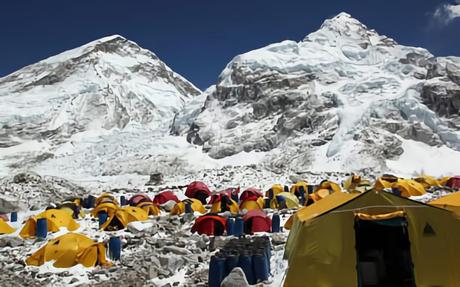
COVID in Everest Base Camp
Heading into the spring 2021 climbing season in the Himalaya, the biggest concern on everyone's mind was the risk of COVID getting passed around amongst the climbers. But Nepal was eager to reopen to travelers, assuring visitors that it would take the necessary steps to ensure that everyone stayed safe-including instituting mandatory quarantines upon arrival. Those quarantines were never enforced however and it wasn't long before travelers were on their way out of Kathmandu. Some of them were obviously infected with the virus when they set out.
Norwegian climber Erlend Ness was the first person in EBC to display "COVID like symptoms." He was evacuated by helicopter back to Kathmandu on April 18. It took several more days for him to be given a PCR test, which eventually came back as positive. That indicated that Ness did indeed have the virus, but whether or not he was sick when he arrived at base camp or he picked it up from someone else while there remains a mystery.
According to Explorers Web, a few more climbers began to display symptoms a few days later and if reports are to be believed, numerous others have since followed. But Nepali officials have reused to acknowledge that COVID has reached Everest Base Camp, instead saying that climbers are suffering from pneumonia or high-altitude pulmonary edema (HAPE), aka altitude sickness.
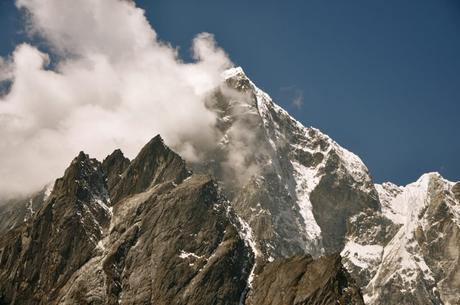
Situation on Everest "a Total Shitstorm"
Of all the headlines and stories coming out of Everest Base Camp over the past week or so, Everest blogger/podcaster Alan Arnette's quote from a climber who wishes to remain anonymous has to be the most telling. This person had only just arrived in BC late last week, but was horrified at what they found. Their quote in full was this:
"I have taken a helicopter out of EBC back to Kathmandu after 1 day. The Covid situation at EBC is a total shitstorm. I had no clue what I was flying into. It felt asinine to even be there. It was a heartbreaking decision but I'm putting my health first. Covid at a high altitude does not sound like something I want to play with. \Will hopefully fly home within the next couple of days and focus on K2 for June. There's just way too many people at EBC this year. Wishing all of the climbers there to be safe and successful but this girl is getting the hell out of dodge."
Since then, we've heard rumors that as many as 8 or 10 climbers were being evacuated to Kathmandu each and every day. Official reports say they are being treated for HAPE or pneumonia, but it seems to be the worst kept secret in Nepal that it is actually COVID. Just how many people have been infected remains unclear.
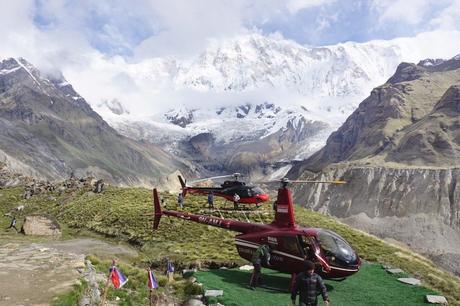
Climbing Season to Proceed
Despite this reportedly widespread outbreak of COVID in base camp, Nepali officials and Sherpa leaders have continually indicated that the season will go on as planned. In fact, the official line in Nepal is that the virus has not reached Everest at all and that there is simply no reason to consider calling thins off. As is typical with the Himalayan country, money is at the root of many decisions, both good and bad.
As already stated, 2021 was suppose to be Nepal's return to normalcy and it's hard-hit tourism sector can use the boost. After a year of no visitors in 2020, the economy there is on hard times. Having to close Everest for another season would be a disaster for the county's reputation and cause further damage to the already fragile economy.
There may be another reason why Nepali officials are unwilling to admit COVID has found its way to Everest Base Camp as well - insurance fraud. It is well known that mountain guides, hospitals, and local helicopter pilots have operated a long-running scam that charged trekkers and climbers for unnecessary evacuations, then passed the bills on to their insurance companies. But most adventure travel insurance plans won't cover COVID treatment. By calling their symptoms HAPE or pneumonia, there is a better chance that they'll all get paid.
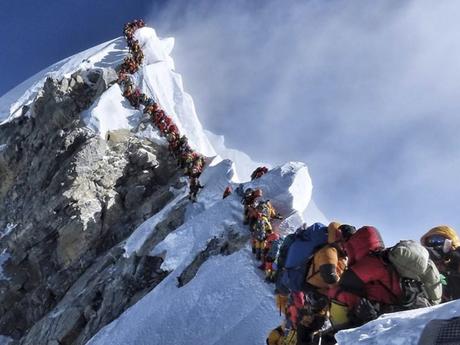
Record Number of Climbers and Possible Traffic Jams
Another reason Nepal is avoiding talking about COVID is that there is a record number of climbers on Everest this season, despite the ongoing pandemic. Having to cancel now would mean pushing many of the permits that have already been issued into next year or the year after. Instead, Nepal is looking to cash in on the 408 permits that it has handed out this year rather than collect on them down the line. For the reference, there were roughly 380 permits issued in 2019, the year the now infamous traffic jam photo above was taken. Depending on how things play out, we could see a similar thing happen this year too.
While we're on the subject of that much-publicized photo, over the past weeks Nepali officials have come up with a way to try to eliminate traffic jams near the summit. According to new rules, the teams will have to summit in the order that their permits were issued, with the first teams to get their permits going up first. Meanwhile, the teams that were bit later in getting their permits will have to not-so patiently wait their turn.
In theory, this sounds like a good way to regulate who has access to the summit. The problem is, the weather window for reaching the top of the mountain rarely stays open for more than a few days, which means some climbers may not get a crack at the summit at all. Some may be forced to sit in BC waiting for their turn, which may never come. Needless to say, I expect the teams will ignore this rule once the weather forecasts for mid-May begin to firm up.
Teams on the Move
At the moment, many of the teams have left BC and are now up in Camp 1 and Camp 2 as part of their acclimatization rotations. That's typical for this point in the season when the climbers are putting the finishing touches on their preparation. What's different this time out is the amount of time that is being spent at the higher camps.
Usually, teams will spend a night in C1, another night at C2, and may even climb up to "touch" Camp 3 as they prepare for their summit push. Several teams are spending two or three nights in Camps 1 and 2 however, which is not at all typical. The reasons are likely twofold. First, they do indeed want to get as acclimatized as possible, but they're also avoiding the COVID outbreak in Base Camp. Either way, the strategy is either a brilliant move or one that could leave the teams more tired than usual.
Now that May has arrived, the summit window is approaching. The teams will soon be forced to return to base camp to rest up and prepare for their final push. Usually, the summit window opens sometime around May 15-give or take a few days-and lasts for just three or four days. This year, it will be interesting to watch the teams jockey for positions as they prepare to go up. It seems like we could be watching more chaos unfold in the mountains in just a few weeks time. Let's just hope everyone gets up and down safely.
